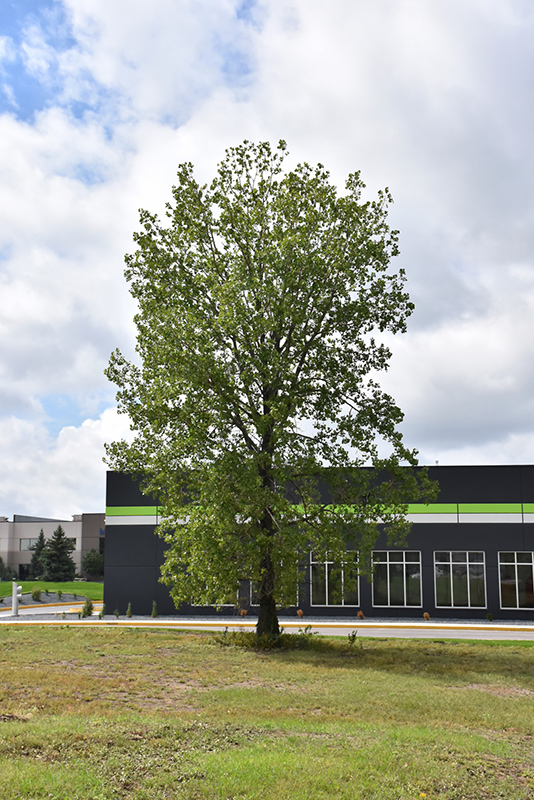Jeronimus Plains Cottonwood
Populus deltoides 'Jeronimus'
Height: 80 feet
Spread: 50 feet
Sunlight:
![]()
Hardiness Zone: 2a
Other Names: Straight Plains Cottonwood, syn. Populus sargentii
Description:
A large, wide and spreading shade or windbreak tree; extremely fast growing, and adaptable to exposed, dry conditions and poor soils; a very straight growing selection; roots can be aggressive near foundations, only suitable for larger areas
Ornamental Features
Jeronimus Plains Cottonwood has rich green deciduous foliage on a tree with a round habit of growth. The large heart-shaped leaves turn yellow in fall. However, the fruit can be messy in the landscape and may require occasional clean-up.
Landscape Attributes
Jeronimus Plains Cottonwood is a deciduous tree with a more or less rounded form. Its relatively coarse texture can be used to stand it apart from other landscape plants with finer foliage.
This is a high maintenance tree that will require regular care and upkeep, and is best pruned in late winter once the threat of extreme cold has passed. Gardeners should be aware of the following characteristic(s) that may warrant special consideration;
- Messy
- Invasive
- Disease
Jeronimus Plains Cottonwood is recommended for the following landscape applications;
- Accent
- Shade
- Windbreaks and Shelterbelts
Planting & Growing
Jeronimus Plains Cottonwood will grow to be about 80 feet tall at maturity, with a spread of 50 feet. It has a high canopy of foliage that sits well above the ground, and should not be planted underneath power lines. As it matures, the lower branches of this tree can be strategically removed to create a high enough canopy to support unobstructed human traffic underneath. It grows at a fast rate, and under ideal conditions can be expected to live for 80 years or more.
This tree should only be grown in full sunlight. It is an amazingly adaptable plant, tolerating both dry conditions and even some standing water. It is considered to be drought-tolerant, and thus makes an ideal choice for xeriscaping or the moisture-conserving landscape. It is not particular as to soil type or pH, and is able to handle environmental salt. It is highly tolerant of urban pollution and will even thrive in inner city environments. This is a selection of a native North American species.
